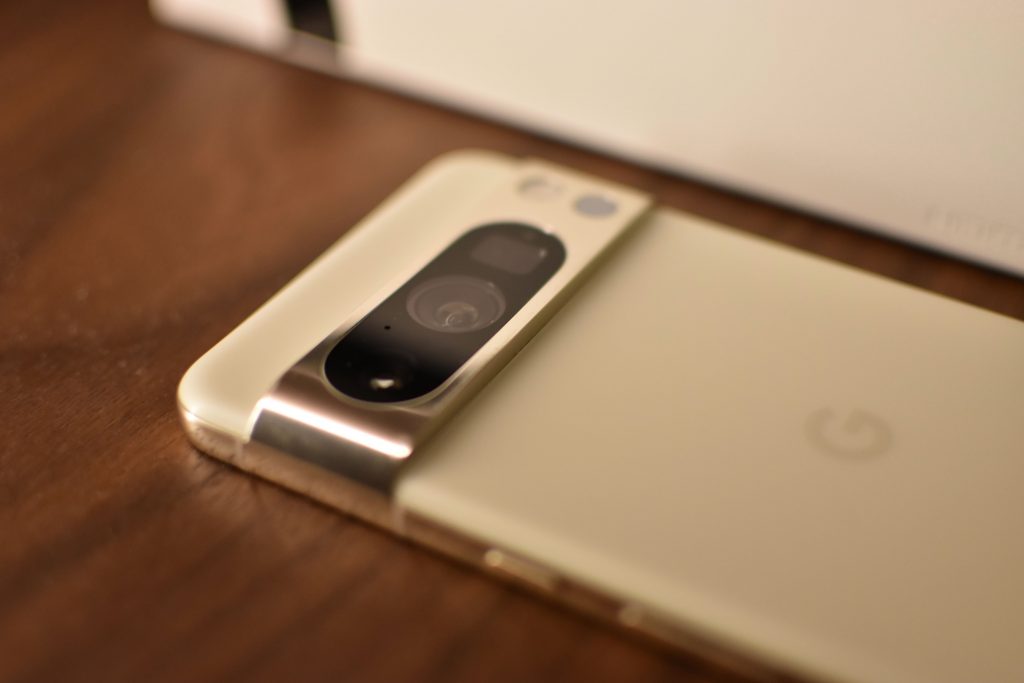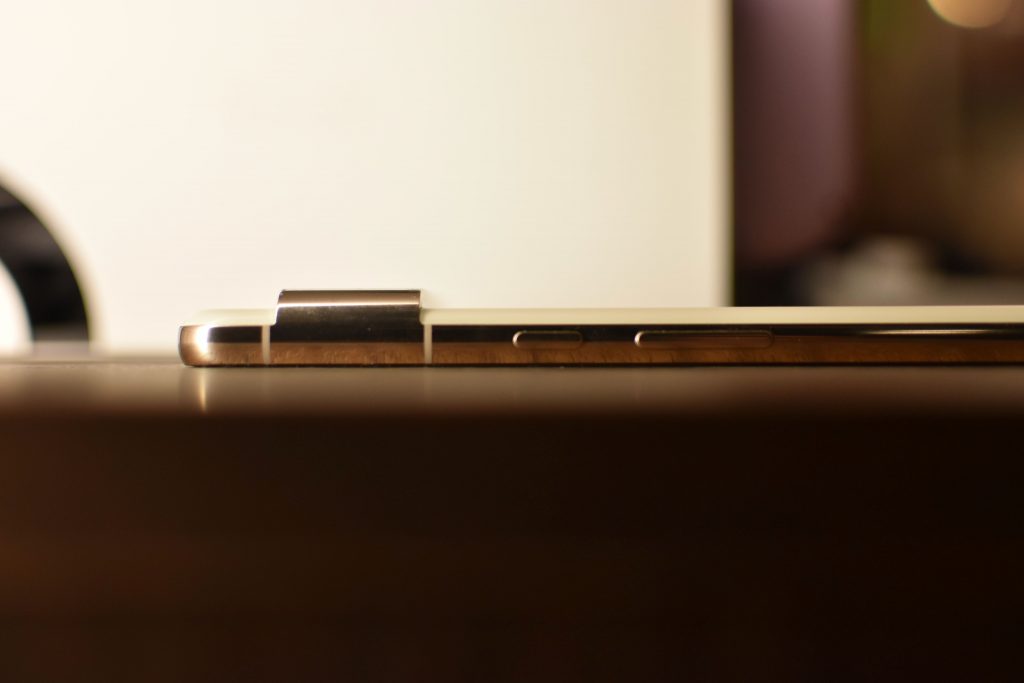Written by Wen Rui Liau
TL;DR: Pixel 8 Pro delivers a reliable, clean, and snappy interpretation of Android with an impressive camera performance. However, the design and pricing may not be for everyone.
Another year, another Pixel. The headline of this year’s Pixel 8 Pro launch was definitely its AI features (“Best Take”, “Audio Eraser”) as well as 7 years of software updates. Amidst the sea of buzzwords, I hope to evaluate the device on the merits that matter – what it’s like using it in my daily life, moving over from my daily driver Oppo Reno5 Pro 5G.
Specs for the Pixel 8 Pro can be found here. We’ve also reviewed the regular Pixel 8 on the site.
Design and Handling
Similar to last year’s Pixel 7 Pro, the 8 Pro is a large phone, and its build exudes its flagship status. The new frosted glass back is nice to the touch, resistant to fingerprints, and meets the polished aluminium frame seamlessly. The camera bar returns, and I like the slightly more refined aesthetic of its combined camera array containing all 3 lenses. That being said, I found the camera bar slightly uncomfortable as a finger rest, given its sharp edges and how much it protrudes from the camera body. Its polished surface is also prone to looking grimy from fingerprints.
On handling, I could never feel fully comfortable (with or without a case) holding and using the Pixel 8 Pro due to its weight distribution being very top heavy. At 213g, the phone is ~30g heavier than my Oppo daily driver, and the difference in weight was very noticeable. Thankfully, the frosted glass back makes the phone grippier than the smooth glass in the Pixel 7 Pro last year, and while it is still prone to slipping out of my Uniqlo track pants pocket, it is less likely to do so.
Display and Performance
The Pixel 8 Pro ships with a 6.7 inch “Super Actua” display, which has variable refresh rate from 1-120Hz, and a peak brightness of 2,600 nits. In day-to-day use, the screen was comfortably bright in all scenarios, and the variable brightness was quick to adapt to the changing surrounding lighting conditions. The variable refresh rate was seamless as well, subtly dialling down to 60Hz when watching videos, or 1Hz when idling in the homescreen, and quickly jumping back up to a buttery smooth 120Hz when sensing touch on the screen.
The Pixel 8 Pro ships with Tensor G3, the third generation of Google’s “in-house” chip for the Pixel series, fabricated on a Samsung 4nm process. My unit scored 826,639 on Antutu’s benchmark, which is… average and below most flagship chips like the Snapdragon 8 Gen 2. Google was quick to emphasise that the Tensor G3’s performance is not solely about the benchmarks, but rather the unique Pixel features (“AI”) that is enabled by this custom silicon.

I half-heartedly agree with Google’s argument here. A chip’s performance should not solely be judged on benchmark numbers alone, and granted the Pixel 8 Pro feels more than adequately snappy for most day-to-day tasks – apps load fast, the screen is always fluid to the touch, and photos are captured and processed without a hitch.
However, compared to the competition, the benchmarks do suggest that the thermal efficiency of the Tensor G3 could be improved, which is what I observed in my daily use as well. The phone gets surprisingly warm from activities like video calls, or even streaming YouTube Premium with the screen off. I suspect that this might be due to Samsung’s fabrication process being inferior to TSMC’s; this was observed even in Qualcomm’s previous chips, where the TSMC-fabricated Snapdragon 8+ Gen 1 was released to fix the inferno that was the Samsung-fabricated Snapdragon 8 Gen 1. That being said, I do find these heat management observations leaning towards being nitpicky, especially since they are much improved from the Tensor G2. The Tensor G3 does well to power the Pixel 8 Pro, I just wish for TSMC’s rendition on this chip someday.
Software and Battery Life
Getting started on the Pixel 8 Pro was rough for me. The migration process from my Oppo to the Pixel was a painful process – apps weren’t logged in, files were missing, and WhatsApp refused to restore the cloud backup (granted WhatsApp has always been a mess). This was a pity and a poor way to have started my experience with the device. I do wish for Android to get this right someday, as it would definitely entice customers to upgrade their devices. For reference, I find the migration process between Macbooks to be the gold standard – apps are all logged in (even browser sessions!), files where you expect them to be, and you can get running almost immediately.
Apart from the rough start, the Pixel’s Android 14 software experience is a very positive one – it’s fast, clean, and an overall delightful experience. My main discomfort with the UI is in the “News Feed” present on the left on the home screen – I feel that Google shouldn’t be stuffing ads within the feed of a premium flagship.

Google promises 7 years of software updates for the Pixel 8 line, which includes Android OS upgrades, security updates, and regular Feature Drops. This is industry-leading in the world of smartphones – as far as I know, even Apple does not have an official commitment when it comes to software support for the iPhone. It is too early to tell whether the hardware will be able to hold up, especially with parts prone to wear-and-tear (buttons, battery etc.). I do wish that Google would have put their money where their mouth is, and extend the standard manufacturer warranty beyond the 1 year that the device currently ships with.
The battery life of the Pixel 8 Pro is also good. With regular use and starting on a full charge, the 5,050mAh cell got me through a full work day with about 30% battery at the end of the day. This is a promising start to the 7-year lifespan of the Pixel 8 Pro.
The Pixel 8 Pro offers 30W fast wired charging, which is not blazingly fast but adequate for my use case. I tend to not charge my phone overnight, and only charge it after waking up and unplugging it as I leave the house for work. This gives me enough charge to get through the work day, although I do wish that the battery was topped up fuller so I won’t have battery anxiety worrying about a long day.
Cameras
The Pixel 8 Pro packs a triple rear camera array, with a primary shooter, ultrawide, and 5x telephoto lens. The ultrawide also doubles up as a macro camera. The camera array is even more versatile than last year, giving me the confidence to shoot in every scenario, such as the rock concert that I found myself in.




The main sensor was also particularly reliable at night, soundly managing tricky lighting situations.

Videos were similarly reliable, with buttery smooth stabilisation even at 5x zoom. Google plans to launch Video Boost later this year for the Pixel 8 Pro, and I look forward to seeing how it will further enhance the video taking experience.
The Pixel 8 Pro also comes with a suite of AI features, such as “Best Take” or “Audio Eraser”. When you need it, they work fine, such as Best Take salvaging group photos that were otherwise unusable. However, these features work rather slow on the device even with the Tensor G3, taking a couple of seconds to scan and pre-process photos.
All in all, the cameras on the Pixel 8 Pro are truly flagship level, and were a joy to use throughout my time with it. My main criticism of the cameras is the same as it was on the Pixel 7 Pro last year: there really is no need for the processing of AI features to be on-device and hence exclusive to the Pixel 8 Pro. Google has already shown this with Video Boost that they plan to launch, where the processing will be in their data centres. Having them processed in the cloud would make for a smoother user experience, given how slow the on-device processing is.
Value & Verdict
The Pixel 8 Pro retails for S$1,549 for the 128GB version, S$1,649 for the 256GB version and S$1,849 for the 512GB version. That represents about a $200–$250 price increase compared to the Pixel 7 Pro. Given the 7 years of software support and expected longevity of the device, it’s comical that the base model is only 128GB when much cheaper competitors offer 256GB as standard. S$1,649 is a lot to pay for a 256GB phone, and from my perspective, the price increase is largely attributed to the increased software support that the Pixel is bringing. Google isn’t expecting Pixel owners to change their phones regularly, and seem to be shifting to a model of locking consumers into the Google ecosystem, earning from the software services that Pixel users may sign up for, such as Google One, YouTube Premium etc.
If you just want a pleasant all-rounded Android experience without needing to put in much thought, and the size is right for you, I would say that the Pixel 8 Pro is a great phone to consider. The steep price increase from its predecessor might give you second thoughts however; but if the Pixel 8 Pro lasts as long as Google thinks it will, then it might just be worth it.
For me personally, I wouldn’t buy the Pixel 8 Pro simply due to my discomfort with its weight distribution, and the price.
Editor’s note: The reviewer actually ended up getting a second-hand Pixel 7 Pro at a good deal (less than 40% the retail price of a brand new Pixel 8 Pro), and honestly, second-hand might be the way to go for more savvy consumers. As much as Google is touting the Pixel line as premium devices, they don’t seem to be holding their value much on the second-hand market. A second-hand Pixel 8 next year will still have another 6 years of software support – honestly waiting for that might be the smartest move yet.
As always, when purchasing online, check if you can get additional cashback on your purchase with ShopBack. You can also check out our deals page for more Singapore deals.
Liked this review? Follow us on Facebook, Twitter or Instagram for more updates!









